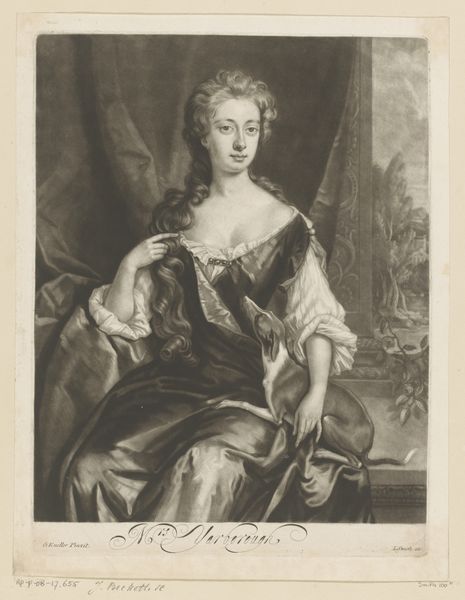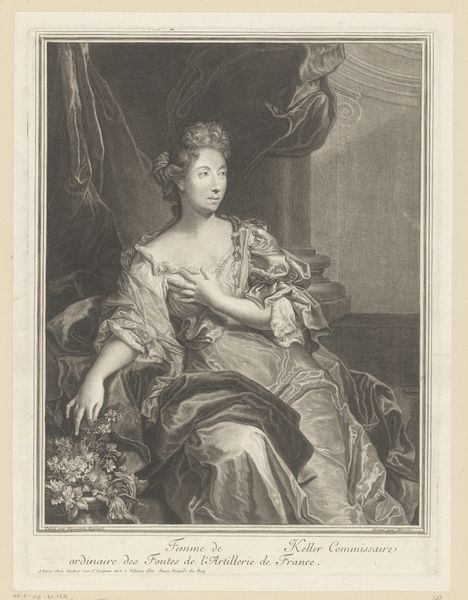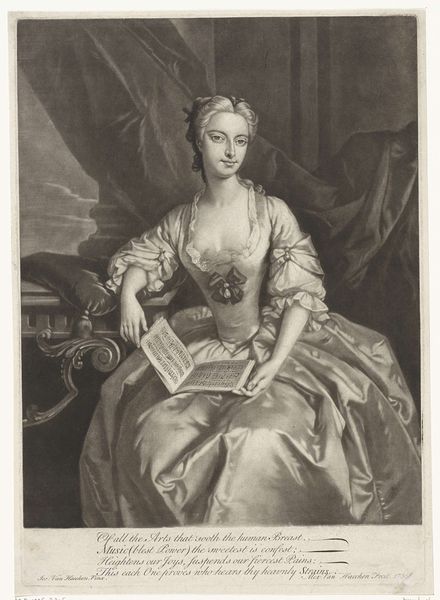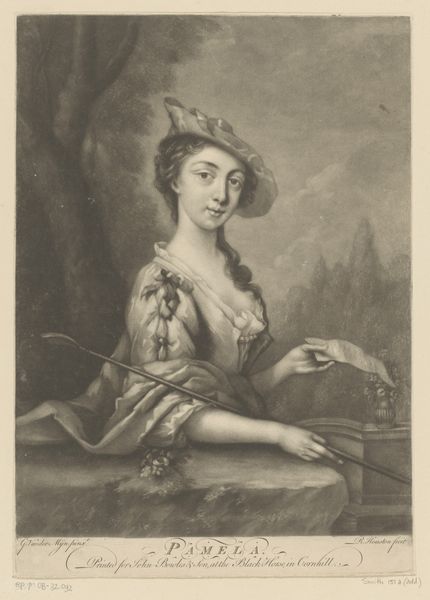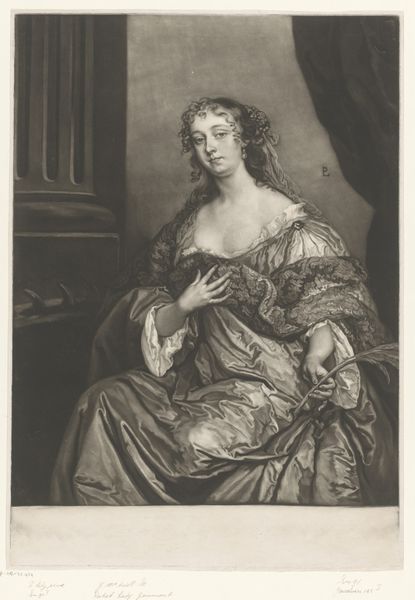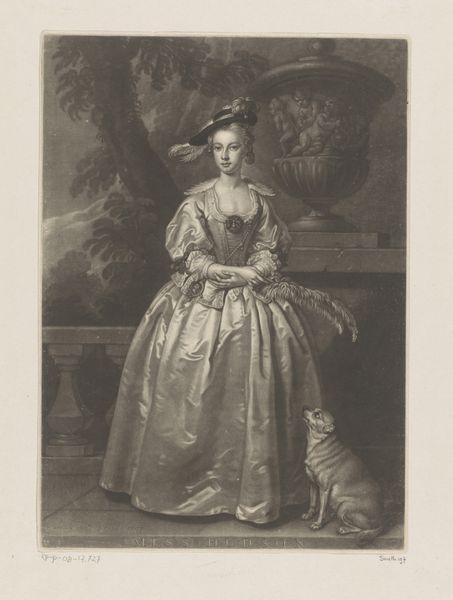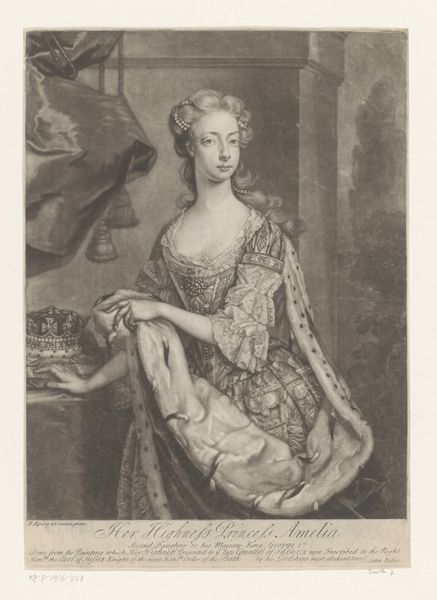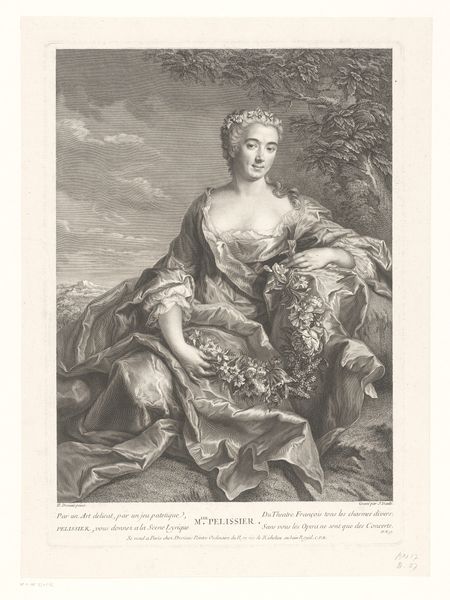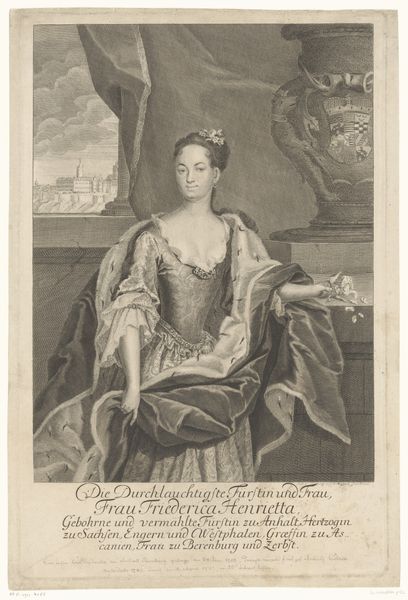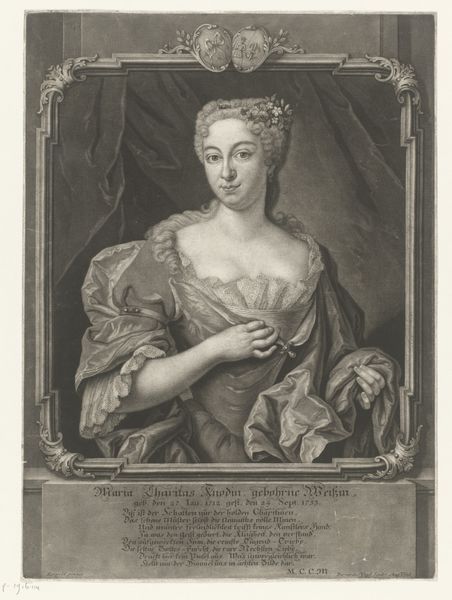
paper, engraving
#
portrait
#
baroque
#
charcoal drawing
#
paper
#
pencil drawing
#
framed image
#
line
#
portrait drawing
#
engraving
Dimensions: height 357 mm, width 252 mm
Copyright: Rijks Museum: Open Domain
Curator: Before us we have John Faber the Younger’s "Portrait of Mary Howard," an engraving likely created between 1726 and 1756. Editor: It exudes a cool elegance, almost aloof. The texture rendered in the dress suggests a shimmering weight. Curator: Observe how Faber masterfully uses line and shading to model Mary Howard’s figure, note how light glints off the fabric and creates volume through chiaroscuro. Editor: It’s the contrast between the meticulous detail of her dress—all that lace!—and the rougher strokes that build up the background that grabs my attention. What inks were readily available? And how was this baroque portrayal of status distributed to a broader public, impacting consumption habits and societal power structures? Curator: Those lines serve to establish pictorial space and lead our eye through the composition, finally resting on her face—the focal point, in sharp detail to enhance her identity as the main subject of attention. The engraver employs conventional baroque symbolism such as drapery and classical backgrounds to ennoble the sitter. Editor: I find myself thinking about the division of labor involved in its creation; how engravers interpreted painters’ intentions for print. How much input did Howard have, versus how much the artist molded her public persona with their material manipulations? The engraver is literally etching a mark of status. Curator: That perspective illuminates fascinating avenues of inquiry, yet it also risks overlooking the intrinsic qualities of Faber's deliberate and visually stimulating portrait. By framing it as pure craft or manufacture we might neglect what remains an accomplished formal exercise. Editor: Perhaps. But considering production expands understanding and appreciation for not only Faber’s individual skill but of artistic economies shaping this image's ongoing legacy, and indeed, her own. Curator: Indeed. It reminds us to analyze the full, visually dynamic experience and interpret the deeper aesthetic concepts and techniques. Editor: Absolutely. This piece provokes questions extending far beyond initial elegant surfaces—or their carefully manufactured representations.
Comments
No comments
Be the first to comment and join the conversation on the ultimate creative platform.
